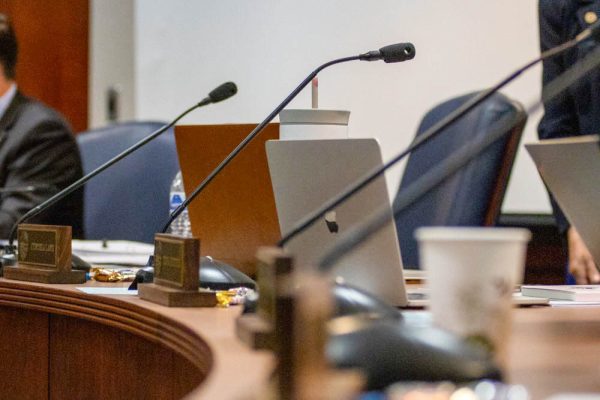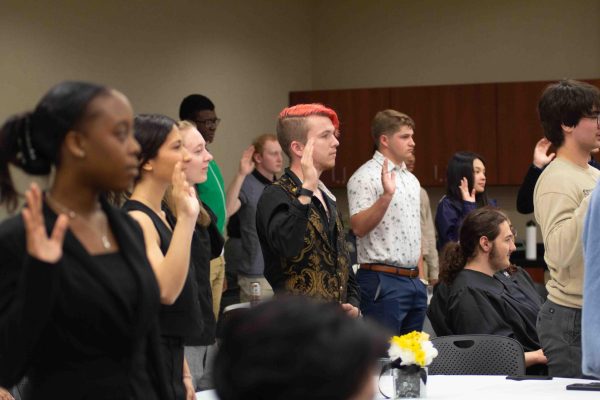WSU acquires 125 Gordon Parks photos
Wichita State has effectively established itself as a haven for anybody interested in the life and work of photographer Gordon Parks.
A new acquisition of 125 photographs brings the collection to 166 photographs and 130 boxes of personal memorabilia, said Jessy Clonts, public relations and marketing manager of the Ulrich Museum of Art.
Born into poverty, Parks faced challenges of racial issues and economic hardships.
Parks was born in Fort Scott in 1912, the youngest of 15 children.
“Even in Kansas, things were not easy for an African-American young man of lower social-economic status,” said Ted Ayres, WSU vice president and general counsel.
After taking a few shots with a camera purchased at a pawnshop, it was clear that Parks had a natural knack for photography. His dedication to the art led him to a large breadth of work, from being a fashion photographer to documenting civil injustice.
Parks became the first African-American photojournalist to work for LIFE Magazine. He used the opportunity to reveal images of inequality.
In one of his books, “Choice of Weapons,” Parks wrote about opportunities to fight back against discrimination with violence. But he fought a different way.
“He specifically said, ‘I chose the camera as the best way to demonstrate the ugliness of discrimination, to fight back against racism,’” Ayres said.
After going through their collections, the Gordon Parks Foundation contacted WSU before any other institution to work a deal. Former Ulrich Director Patricia McDonnell and Ayres visited the Foundation for one day, going through the photographs and putting together a wish list for the Ulrich.
“There was one I’ll never forget that was stamped, ‘Property of LIFE Magazine.’ Gordon had crossed it out and wrote, ‘No, property of Gordon Parks.’” Ayres said.
This acquisition is special because it spans more than 50 years of Parks’ work as a photographer, Clonts said. It ranges from his first work with LIFE, which had him following a gang member around Harlem in the ’40s, his work with models and fashion, candid snapshots of Malcolm X and Muhammad Ali and a visit home with the rustic images of Kansas.
“The whole idea and the motivation for the Ulrich, as well as the University, is the recognition of his importance as a photographer, as a native Kansan,” Ayres said. “To continue our effort to make Wichita State a focal point of research about Mr. Parks, this acquisition made complete sense from so many varieties of perspective.”
To finance the acquisition, years of funding had to be collected. Major contributions came from a $150,000 challenge grant set up by Paula and Barry Downing, to which SGA contributed $70,000 in student fees. The entire Parks collection will be shown in early 2016.
If two years is too long to wait to see Parks’s photography, there is a mini-exhibition near the main lobby of the Ulrich. There are usually two or three of his works on display for people to study as they study Parks in class, Clonts said.
Gallery hours are 11 a.m. to 5 p.m. Tuesdays; 11 a.m. to 8 p.m. Wednesdays through Fridays; and noon to 6 p.m. Saturday and Sunday through April 13.








